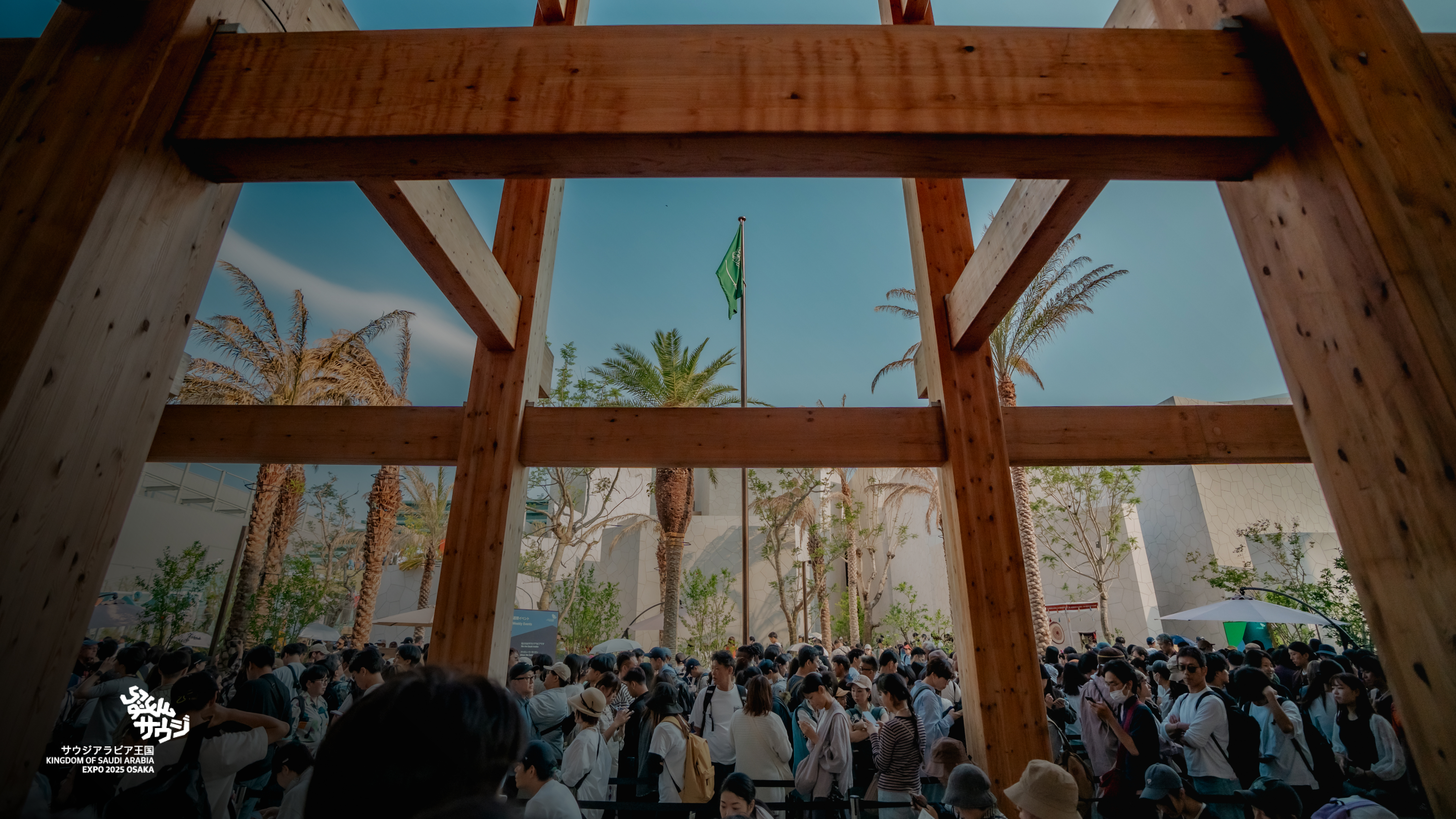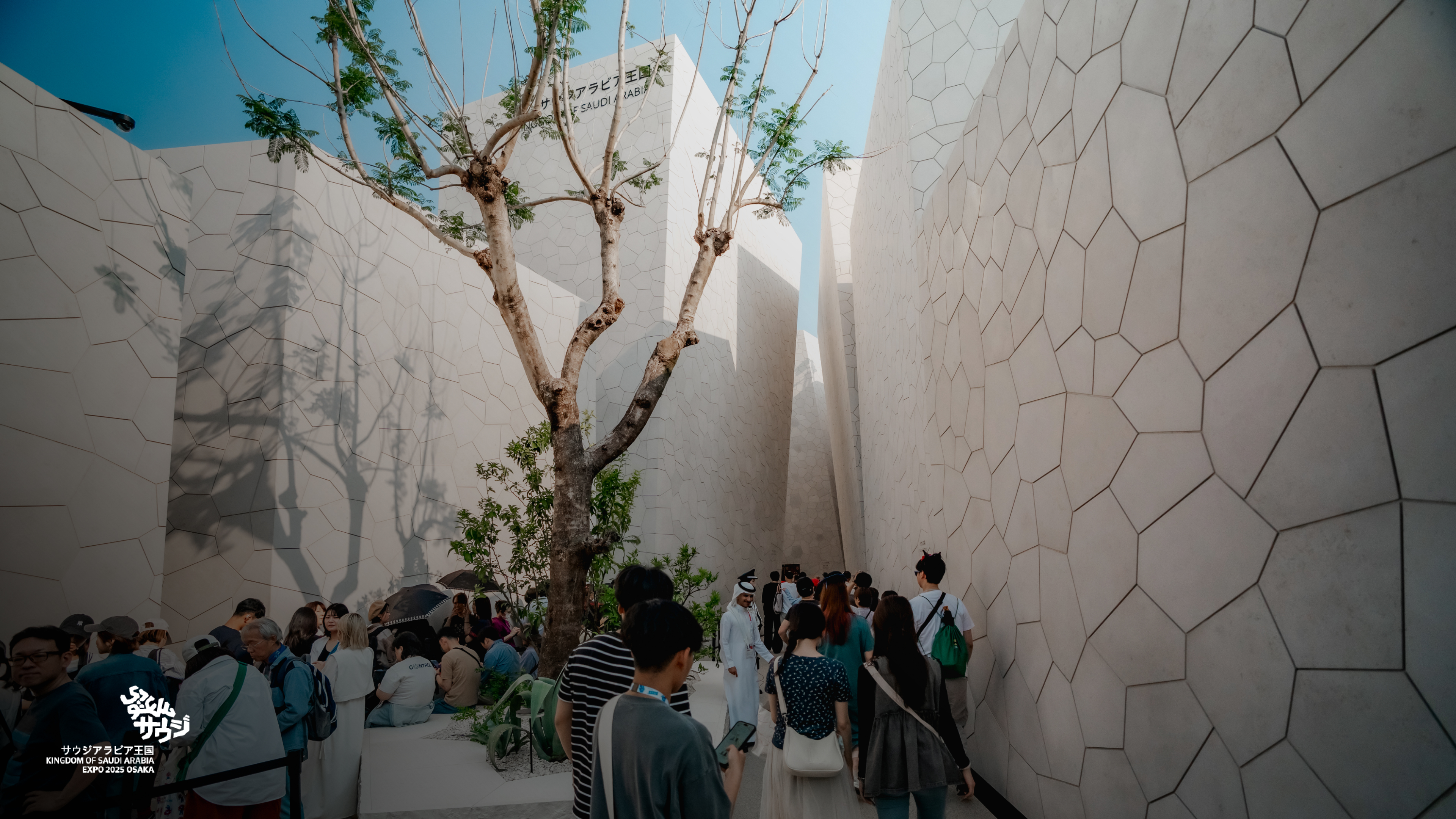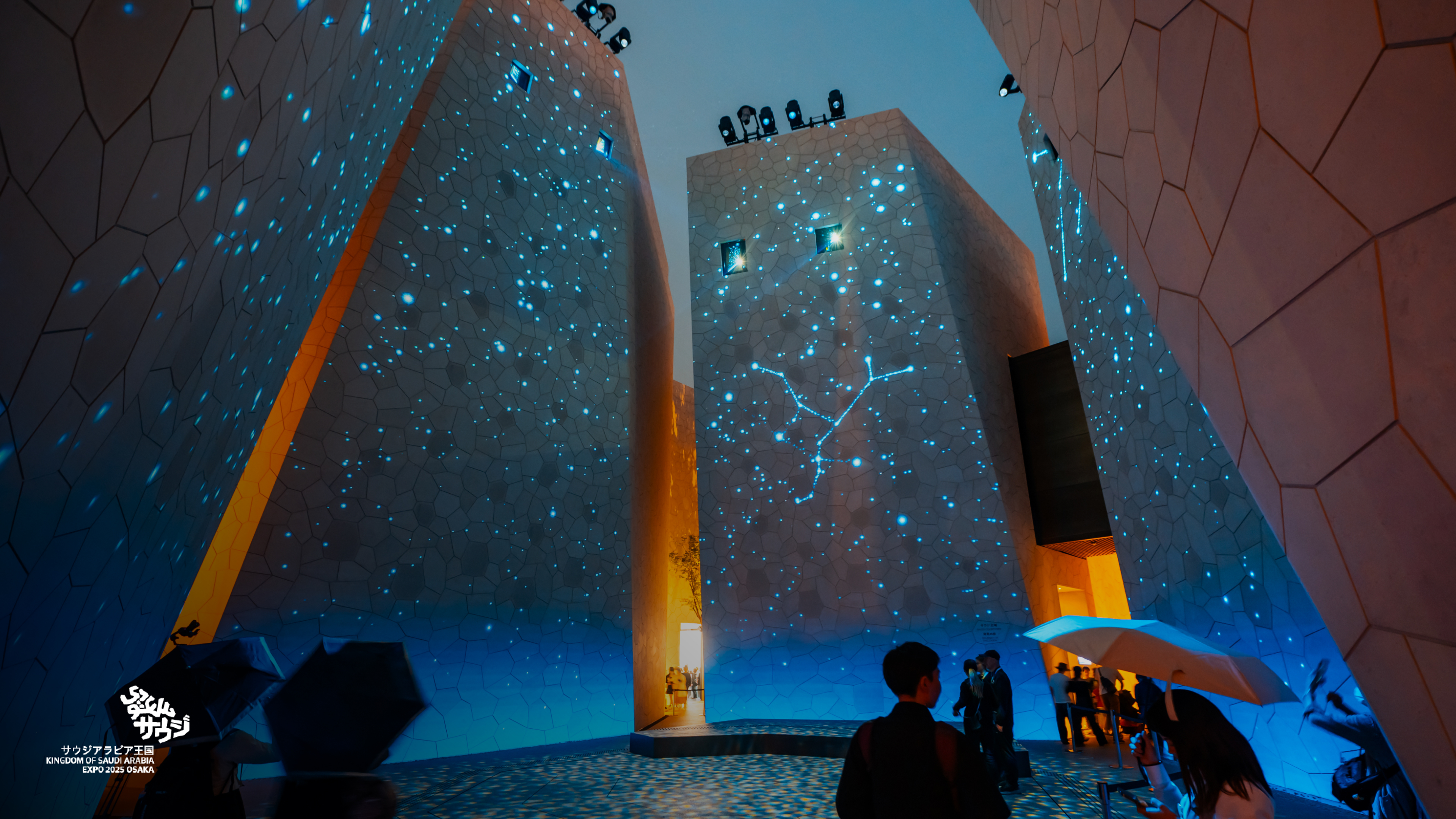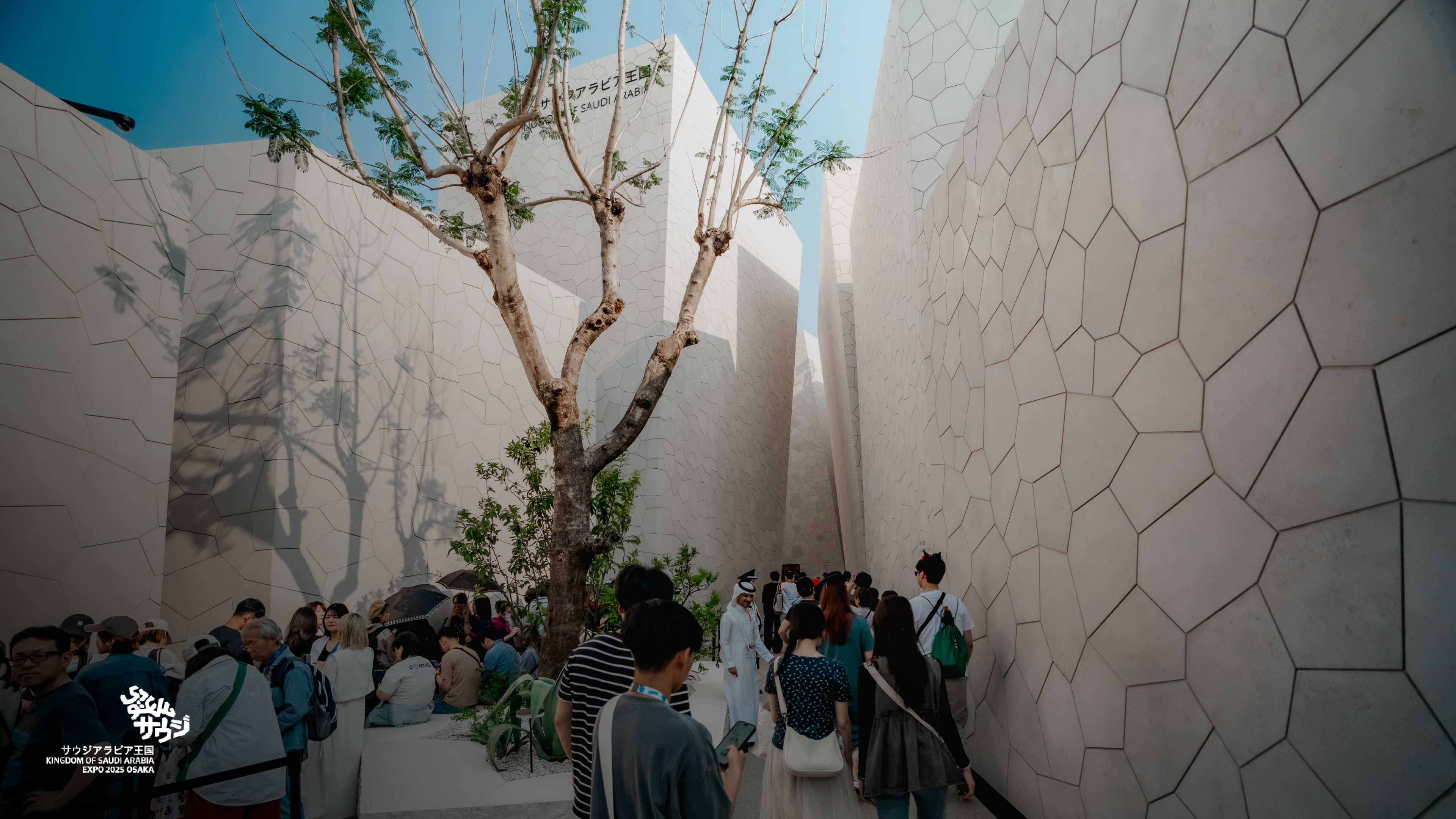Saudi Arabia’s Stone Village
Swathed in a geometric patchwork of stone, Saudi Arabia’s Pavilion at Expo 2025 Osaka is a homage to the kingdom’s culture and unique urban and natural landscapes. Designed by Foster + Partners, the pavilion is the second largest by plot size at the event, behind only the host country, Japan.

Inspired by traditional buildings and the interconnected routes that link the urban landscape of the kingdom, the vast space is also designed to passively regulate airflow. As an area renowned for its desert climate, its inhabitants are accustomed to architecture designed to mitigate temperature fluctuations and wind patterns. Those visiting during the Expo are welcomed into a design adapted for the Osaka climate, which itself experiences highs of 30 degrees over the summer months. Using computational fluid dynamics, the team at Foster + Partners has been able to position the group of buildings to draw in cool westerly winds in the summer, while acting as a windbreak in cooler climes.

While it looks like it's built for permanence, which the choice of Saudi stone adds to, the pavilion stays true to the temporary nature of the event (albeit a six-month period) and also has sustainability at its heart. It adopts a DfMA-based (Design for Manufacturing and Assembly) approach, which helps to simplify the building process, as well as disassembly. Relatively lightweight steel moment frames are used throughout, which allows for a reduction in concrete foundations, while roofs house photovoltaic panels that power the buildings. The pavilion is the first temporary structure to receive the WELL Health and Safety Rating (HSR) certification, and the addition of low-carbon materials, such as the stone, is a prerequisite of the kingdom’s long-term sustainability plans laid out in the Saudi Green Initiative.


